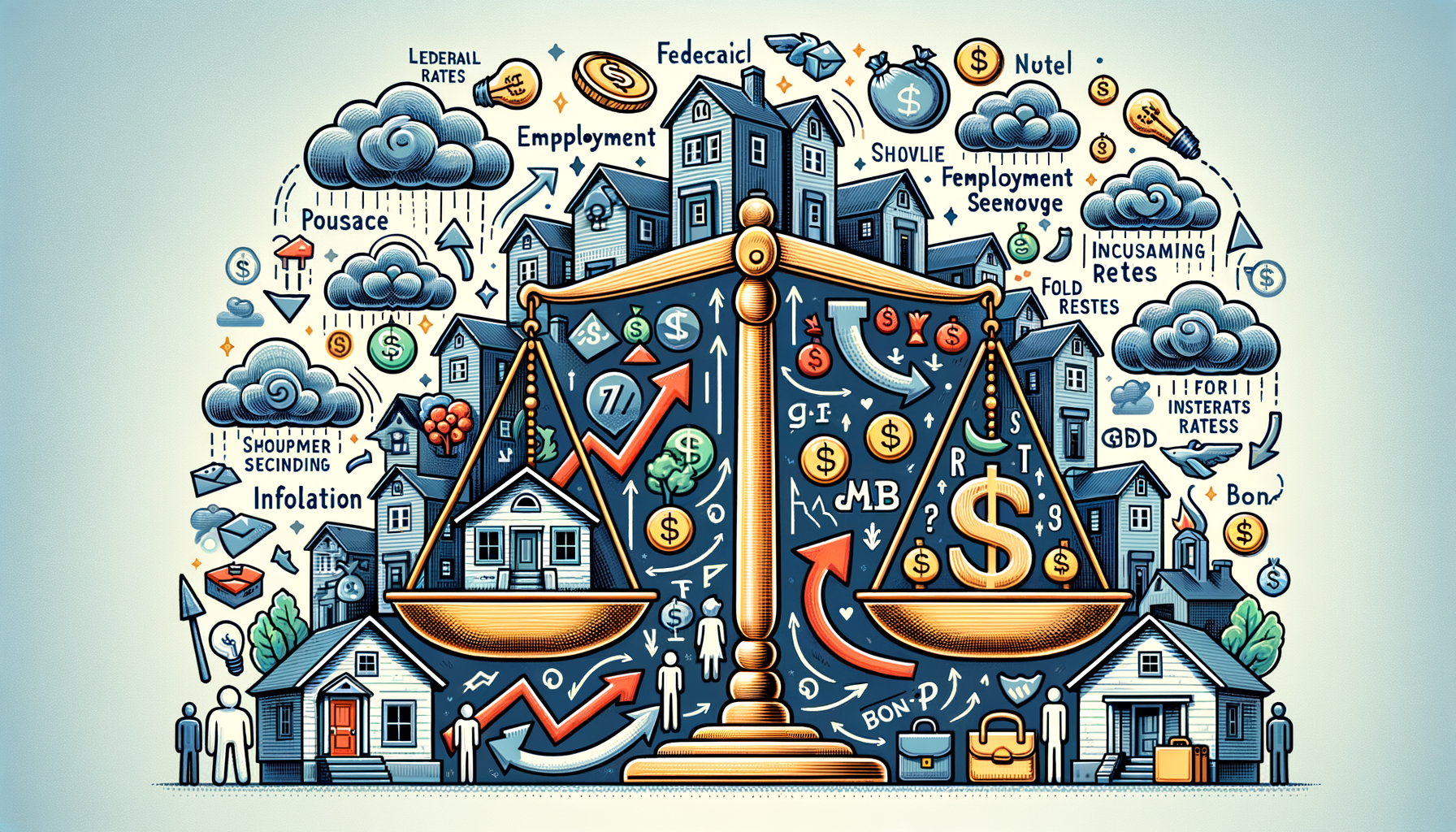“Unveiling the Market Dynamics: An In-Depth Analysis of Mortgage Backed Securities – June 2024”
### The Dynamics of Mortgage-Backed Securities: A Deep Dive
#### Understanding the Basics of Mortgage-Backed Securities (MBS)
Before we delve deep into the recent movements and trends in the world of mortgage-backed securities (MBS), let’s ensure we’re all on the same page about what MBS actually are. In essence, MBS are complex financial products composed of bundles of mortgages. These bundles are assembled by financial institutions and then sold to investors who receive payments as homeowners pay off their mortgages. This setup makes MBS a crucial part of the financial system, notably influencing mortgage rates and the availability of credit in housing markets.
#### Recent Trends and Changes in the MBS Market
Mortgage-backed securities have seen significant fluctuations, influenced by a myriad of factors, including federal policies, investor sentiment, and broader economic conditions. Tracking these trends offers valuable insights not only for investors but also for homeowners and potential buyers.
### The Impact of Federal Reserve Policy on MBS
The Federal Reserve plays a pivotal role in the MBS market. Its policies, particularly those regarding interest rates and asset purchases, exert a significant influence. For example, when the Fed opts to raise interest rates to curb inflation, it usually results in a decline in MBS prices. Why? Because higher interest rates translate to higher mortgage rates, which can decrease mortgage borrowing and, consequently, the appeal of mortgage-backed securities.
Conversely, if the Fed purchases MBS as part of its monetary policy, the demand for these securities is artificially increased, thereby boosting their prices and lowering mortgage rates. This action was vividly demonstrated in past financial crises when the Fed purchased vast amounts of MBS to stabilize the financial market and encourage lending.
#### Tracking Interest Rates: A Key Indicator for MBS Investors
Interest rates are among the most watched indicators for those trading or investing in mortgage-backed securities. A valuable benchmark for these rates in the U.S. is the movement of U.S. Treasury bonds, particularly the 10-year Treasury note. This note often serves as a gauge for mortgage lenders to set their rates; as the yield on this note increases, typically, so do mortgage rates.
The rationale here is fairly straightforward: lenders need to make a profit on the loans they provide. As the cost of borrowing money increases (i.e., higher interest rates on bonds like the U.S. Treasury notes), the cost for potential homeowners to borrow money for a mortgage also climbs, generally making MBS less attractive.
### A Look at Recent MBS Market Movements
Experiencing frequent fluctuations, MBS markets respond to a variety of global and national events, including economic data releases, geopolitical tensions, and changes in government policy. Each of these can sway investor confidence and trading behaviors, impacting the prices and yields associated with MBS.
### Economic Indicators and Their Impact on MBS
Economic indicators such as employment rates, consumer spending figures, and GDP growth also play crucial roles in shaping the landscape for mortgage-backed securities. Positive news in these areas often boosts investor confidence, driving up the demand for MBS, as prospects of higher incomes and job security can lead to more individuals seeking home loans.
However, it’s not just positive economic signals that impact the MBS landscape. Adverse events, such as a rise in unemployment rates or downturns in economic performance, can generate caution and pull back in MBS investments as fears of increased default risks on mortgages climb.
### Inflation’s Role
Inflation holds a significant sway in the MBS market. Its rise often predicts higher interest rates to come, which can lessen the appeal of existing MBS, with their fixed-payment schemes becoming less lucrative compared to new issues potentially offering higher returns aligned with increased rates.
### Geopolitical Tensions and MBS
Global events and political instability can lead to greater market volatility. Investors often seek safety in times of uncertainty, which can include moving funds out of MBS into what are considered safer investments like gold or government bonds. Conversely, stabilization in geopolitical climates can lead to a rally in MBS markets as confidence returns.
### The Influence of Housing Market Health on MBS
The status of the housing market is inevitably linked to the performance of mortgage-backed securities. Factors including home sales rates, housing start figures, and changes in home valuations directly affect the viability and safety of the mortgage loans that underpin MBS. A robust housing market suggests fewer loan defaults and a stable stream of income for MBS holders, hence attracting more investment.
### Investor Behavior and Sentiment
The decisions made by large institutional investors can also greatly impact MBS prices. If these key players anticipate economic downturns or deteriorating mortgage repayment trends, they might reduce their positions in MBS. Individual investors often follow the lead of these larger entities, further exacerbating trends.
### Conclusion: Navigating the Complex MBS Terrain
For both direct participants in the mortgage market and individual investors, understanding the ebb and flow of MBS is crucial. While MBS can offer attractive returns, particularly in a stable or growing economic environment with low-interest rates, they carry inherent risks. Changes in interest rates, economic downturns, sudden shifts in government policy or global events can all dramatically sway the performance of these securities.
Navigating the world of mortgage-backed securities demands not only a keen eye on current economic and financial trends but also a deep understanding of the broader economic and political context. With all the interconnected factors in play, these securities remain one of the more complex, yet fascinating, areas within the financial markets.

